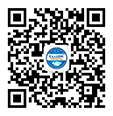| [1] |
张媛. 桑叶的营养成分和食用药用开发价值研究进展[J]. 现代农业科技,2012(22):264−266. [ZHANG Y. Research progress on nutritional components and edible and medicinal value of mulberry leaves[J]. Modern Agricultural Science and Technology,2012(22):264−266.
|
| [2] |
HASSAN F, ARSHAD M A, LI M, et al. Potential of mulberry leaf biomass and its flavonoids to improve production and health in ruminants: Mechanistic insights and prospects[J]. Animals,2020,10(11):2076. doi: 10.3390/ani10112076
|
| [3] |
JI T, LI J, SU S L, et al. Identification and determination of the polyhydroxylated alkaloids compounds with α-glucosidase inhibitor activity in mulberry leaves of different origins[J]. Molecules,2016,21(2):206. doi: 10.3390/molecules21020206
|
| [4] |
WANG Z, TANG C, DAI F, et al. HPLC determination of phenolic compounds in different solvent extracts of mulberry leaves and antioxidant capacity of extracts[J]. International Journal of Food Properties,2021,24(1):544−552. doi: 10.1080/10942912.2021.1904980
|
| [5] |
YU Y, LI H, ZHANG B, et al. Nutritional and functional components of mulberry leaves from different varieties: Evaluation of their potential as food materials[J]. International Journal of Food Properties,2018,21(1):1495−1507. doi: 10.1080/10942912.2018.1489833
|
| [6] |
THABTI I, ELFALLEH W, HANNACHI H, et al. Identification and quantification of phenolic acids and flavonol glycosides in Tunisian Morus species by HPLC-DAD and HPLC–MS[J]. Journal of Functional Foods,2012,4(1):367−374. doi: 10.1016/j.jff.2012.01.006
|
| [7] |
HAO J Y, WAN Y, YAO X H, et al. Effect of different planting areas on the chemical compositions and hypoglycemic and antioxidant activities of mulberry leaf extracts in Southern China[J]. PLoS One,2018,13(6):e0198072. doi: 10.1371/journal.pone.0198072
|
| [8] |
LOWN M, FULLER R, LIGHTOWLER H, et al. Mulberry-extract improves glucose tolerance and decreases insulin concentrations in normoglycaemic adults: Results of a randomised double-blind placebo-controlled study[J]. PLoS One,2017,12(2):e0172239. doi: 10.1371/journal.pone.0172239
|
| [9] |
KIM D, LEE C Y. Extraction and isolation of polyphenolics[J]. Current Protocols in Food Analytical Chemistry,2002,6(1):1−12.
|
| [10] |
WATERHOUSE A L. Determination of total phenolics[J]. Current Protocols in Food Analytical Chemistry,2002,6(1):I1.1.1−I1.1.8.
|
| [11] |
GIUSTI M M, WROLSTAD R E. Characterization and measurement of anthocyanins by UV-visible spectroscopy[J]. Current Protocols in Food Analytical Chemistry,2001(1):F1.2.1−F1.2.13.
|
| [12] |
RODRÍGUEZ-PÉREZ C, QUIRANTES-PINÉ R, CONTRERAS M M, et al. Assessment of the stability of proanthocyanidins and other phenolic compounds in cranberry syrup after gamma-irradiation treatment and during storage[J]. Food Chemistry,2015,174:392−399. doi: 10.1016/j.foodchem.2014.11.061
|
| [13] |
BRAND-WILLIAMS W, CUVELIER M E, BERSET C. Use of a free radical method to evaluate antioxidant activity[J]. LWT-Food Science and Technology,1995,28(1):25−30. doi: 10.1016/S0023-6438(95)80008-5
|
| [14] |
RE R, PELLEGRINI N, PROTEGGENTE A, et al. Antioxidant activity applying an improved ABTS radical cation decolorization assay[J]. Free Radical Biology and Medicine,1999,26(9−10):1231−1237. doi: 10.1016/S0891-5849(98)00315-3
|
| [15] |
BENZIE I F F, STRAIN J J. The ferric reducing ability of plasma (FRAP) as a measure of "antioxidant power": The FRAP assay[J]. Analytical Biochemistry,1996,239(1):70−76. doi: 10.1006/abio.1996.0292
|
| [16] |
LIU T, SONG L, WANG H, et al. A high-throughput assay for quantification of starch hydrolase inhibition based on turbidity measurement[J]. Journal of Agricultural and Food Chemistry,2011,59(18):9756−9762. doi: 10.1021/jf202939d
|
| [17] |
CARAZZONE C, MASCHERPA D, GAZZANI G, et al. Identification of phenolic constituents in red chicory salads ( Cichorium intybus) by high-performance liquid chromatography with diode array detection and electrospray ionisation tandem mass spectrometry[J]. Food Chemistry,2013,138(2-3):1062−1071. doi: 10.1016/j.foodchem.2012.11.060
|
| [18] |
DE BRITO E S, DE ARAÚJO M C P, LIN L Z, et al. Determination of the flavonoid components of cashew apple ( Anacardium occidentale) by LC-DAD-ESI/MS[J]. Food Chemistry,2007,105(3):1112−1118. doi: 10.1016/j.foodchem.2007.02.009
|
| [19] |
CHEN H J, INBARAJ B S, CHEN B H. Determination of phenolic acids and flavonoids in Taraxacum formosanum Kitam by liquid chromatography-tandem mass spectrometry coupled with a post-column derivatization technique[J]. International Journal of Molecular Sciences,2012,13(12):260−285.
|
| [20] |
ÁLVAREZ-FERNÁNDEZ M A, CEREZO A B, CANETE-RODRIGUEZ A M, et al. Composition of nonanthocyanin polyphenols in alcoholic-fermented strawberry products using LC-MS (QTRAP), high-resolution MS (UHPLC-Orbitrap-MS), LC-DAD, and antioxidant activity[J]. Journal of Agricultural and Food Chemistry,2015,63(7):2041−2051. doi: 10.1021/jf506076n
|
| [21] |
HAO M, BETA T. Qualitative and quantitative analysis of the major phenolic compounds as antioxidants in barley and flaxseed hulls using HPLC/MS/MS[J]. Journal of the Science of Food and Agriculture,2012,92(10):2062−2068. doi: 10.1002/jsfa.5582
|
| [22] |
HAN F L. Principal component regression analysis of the relation between cielab color and monomeric anthocyanins in young cabernet sauvignon wines[J]. Molecules,2008,13(11):2859−2870. doi: 10.3390/molecules13112859
|
| [23] |
RADOJKOVIĆ M M, ZEKOVIĆ Z P, VIDOVIĆ S S, et al. Free radical scavenging activity and total phenolic and flavonoid contents of mulberry ( Morus spp. L., Moraceae) extracts[J]. Hemijska Industrija,2012,66(4):547−552. doi: 10.2298/HEMIND111111002R
|
| [24] |
SHEEBA SAJI S, ABHISHEK D R R, VENKATESH K R. Anti-oxidant activity of various leaf extracts of mulberry species in rotenone induced oxidative stress model of rat[J]. J Chem Pharm Sci,2016,9:2732−2736.
|
| [25] |
HE X, CHEN X, OU X, et al. Evaluation of flavonoid and polyphenol constituents in mulberry leaves using HPLC fingerprint analysis[J]. International Journal of Food Science & Technology,2020,55(2):526−533.
|
| [26] |
LIANG L, WU X, ZHU M, et al. Chemical composition, nutritional value, and antioxidant activities of eight mulberry cultivars from China[J]. Pharmacognosy Magazine,2012,8(31):215−224. doi: 10.4103/0973-1296.99287
|
| [27] |
刘庆庆, 张薇娜, 刘琴. 不同方法比较黄酮类化合物抗氧化性及其构效关系分析[J]. 食品工业科技,2016,37(23):109−114. [LIU Q Q, ZHANG W N, LIU Q. Comparison studies on antioxidant capacities of flavonoids by different assays and the structure-activity relationship implication[J]. Science and Technology of Food Industry,2016,37(23):109−114.
|
| [28] |
SILVA D H A, BARBOSA H M, BELTRÃO R L A, et al. Hexane fraction from Brazilian Morus nigra leaves improved oral carbohydrate tolerance and inhibits α-amylase and α-glucosidase activities in diabetic mice[J]. Natural Product Research,2020:1−4.
|
| [29] |
YANG Z, WANG Y, WANG Y, et al. Bioassay-guided screening and isolation of α-glucosidase and tyrosinase inhibitors from leaves of Morus alba[J]. Food Chemistry,2012,131(2):617−625. doi: 10.1016/j.foodchem.2011.09.040
|










 DownLoad:
DownLoad: